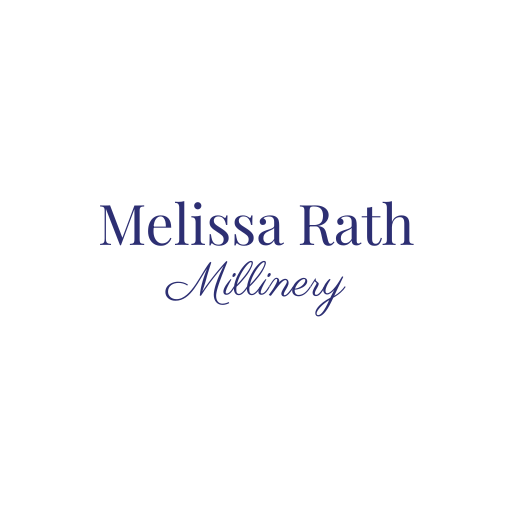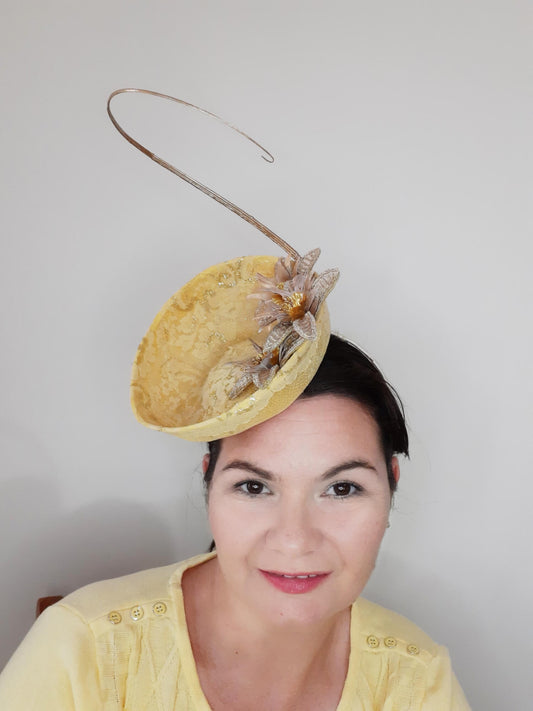
Colour is more than just a collection of hues—it's about creating harmony, contrast, and emotion through combinations. Just as each colour has its own personality, the way colours work together can evoke powerful responses and tell a deeper story.
But how does yellow fit into this complex puzzle? Whether you're pairing it with bold shades or soft neutrals, yellow holds a unique place in the world of colour combinations.
Welcome back to our colour theory series, where we've already explored the dynamics of pairing pink, red, and orange with other colours to create visual impact. If you're already familiar with the basics of colour combinations, feel free to scroll down to dive right into the specifics of yellow!
In this post, we’ll explore how yellow interacts with other colours—what works, what doesn’t, and how to master the art of combining yellow to create designs that pop. Whether you're designing a logo, decorating a space, or experimenting with your wardrobe, understanding how to combine yellow will elevate your creative choices. So, if you're ready to unlock the power of yellow in colour combinations, read on!
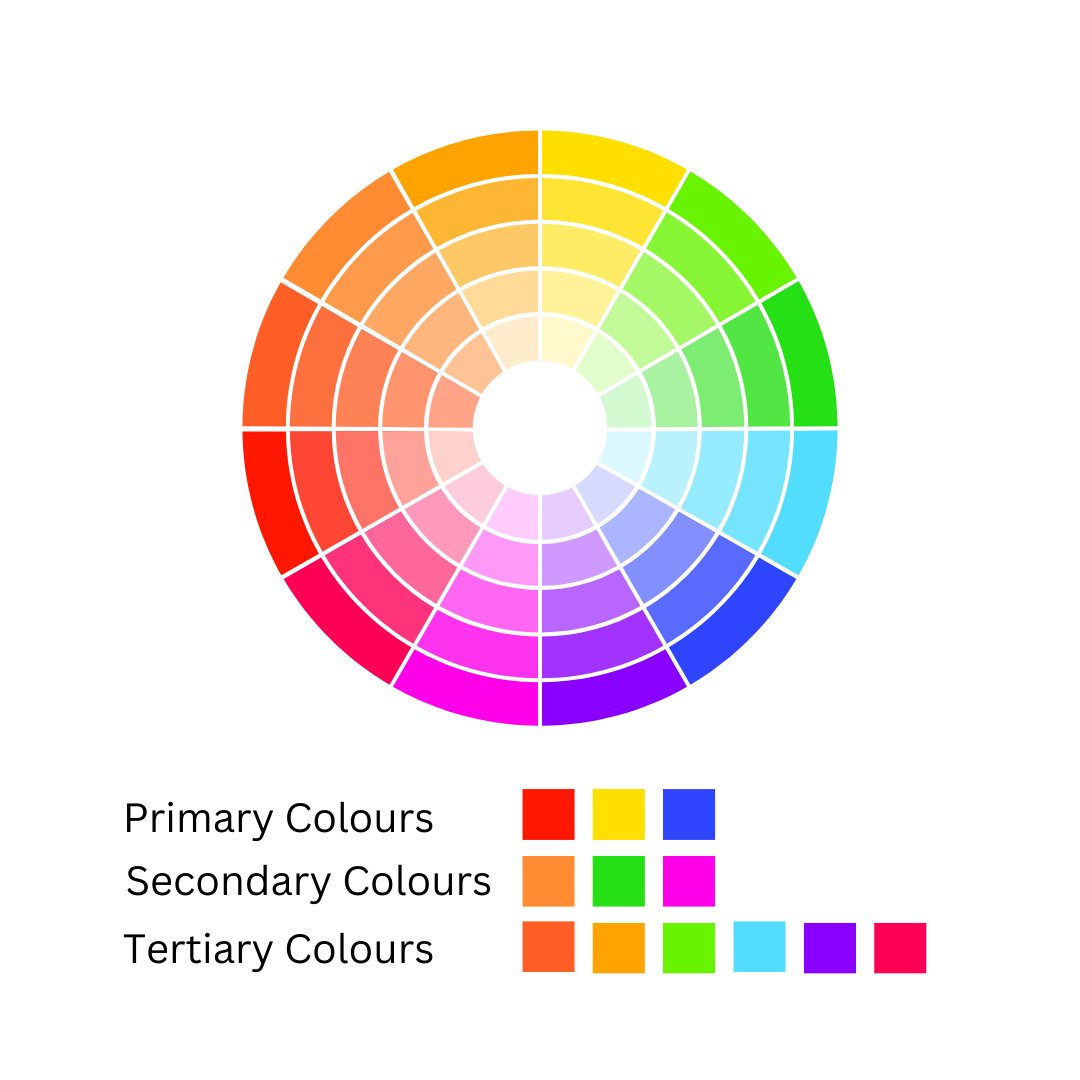
Primary colours—red, yellow, and blue—are the foundational hues that cannot be created by mixing other colours. Secondary colours are formed by combining equal parts of two primary colours, while tertiary colours result from mixing a primary colour with a neighbouring secondary colour, such as red with orange.
In colour theory, the term hue refers to the basic colour families, such as red, green, or blue—essentially the colours of the rainbow. It’s important to note that black, white, grey, and brown are not considered hues. Value describes the lightness or darkness of a colour, measured on a scale from 0 to 10, with 0 representing black and 10 representing pure white. Chroma, meanwhile, refers to a colour’s intensity or saturation—its vividness or dullness.
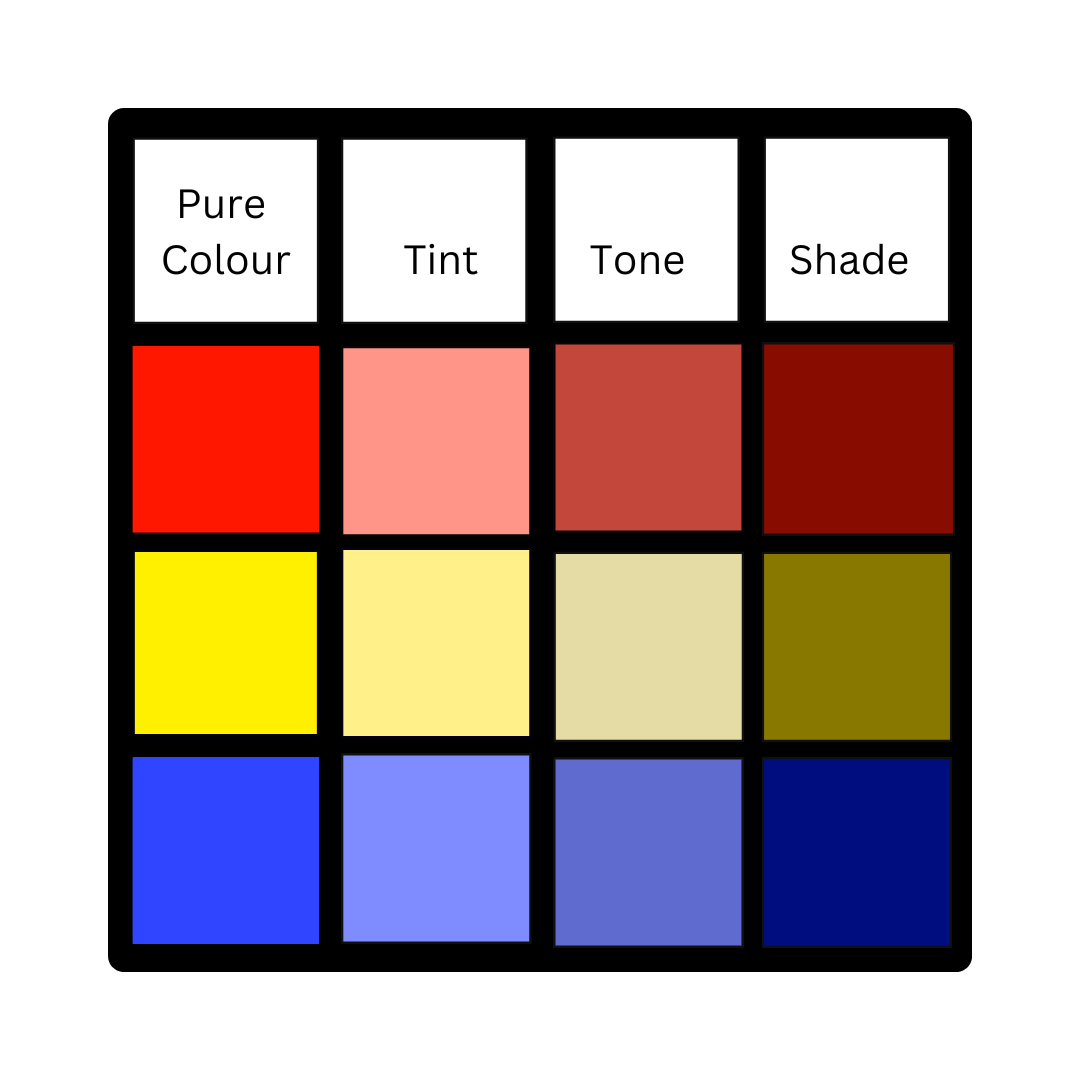
When we talk about shades, tints, and tones, we’re discussing variations of pure colour. A shade is created by mixing a pure colour with black, a tint is made by adding white, and a tone results from blending a colour with grey.
Temperature is another concept in colour theory, often encountered in discussions about personal colour analysis or seasonal palettes. Colour temperature refers to whether a colour has a warm undertone (yellow) or a cool undertone (blue). This distinction plays a crucial role in determining which colours suit certain complexions or settings.
One of the most valuable aspects of colour theory is the idea of colour harmony, which refers to the combinations of colours that produce aesthetically pleasing results. Common colour harmonies include:
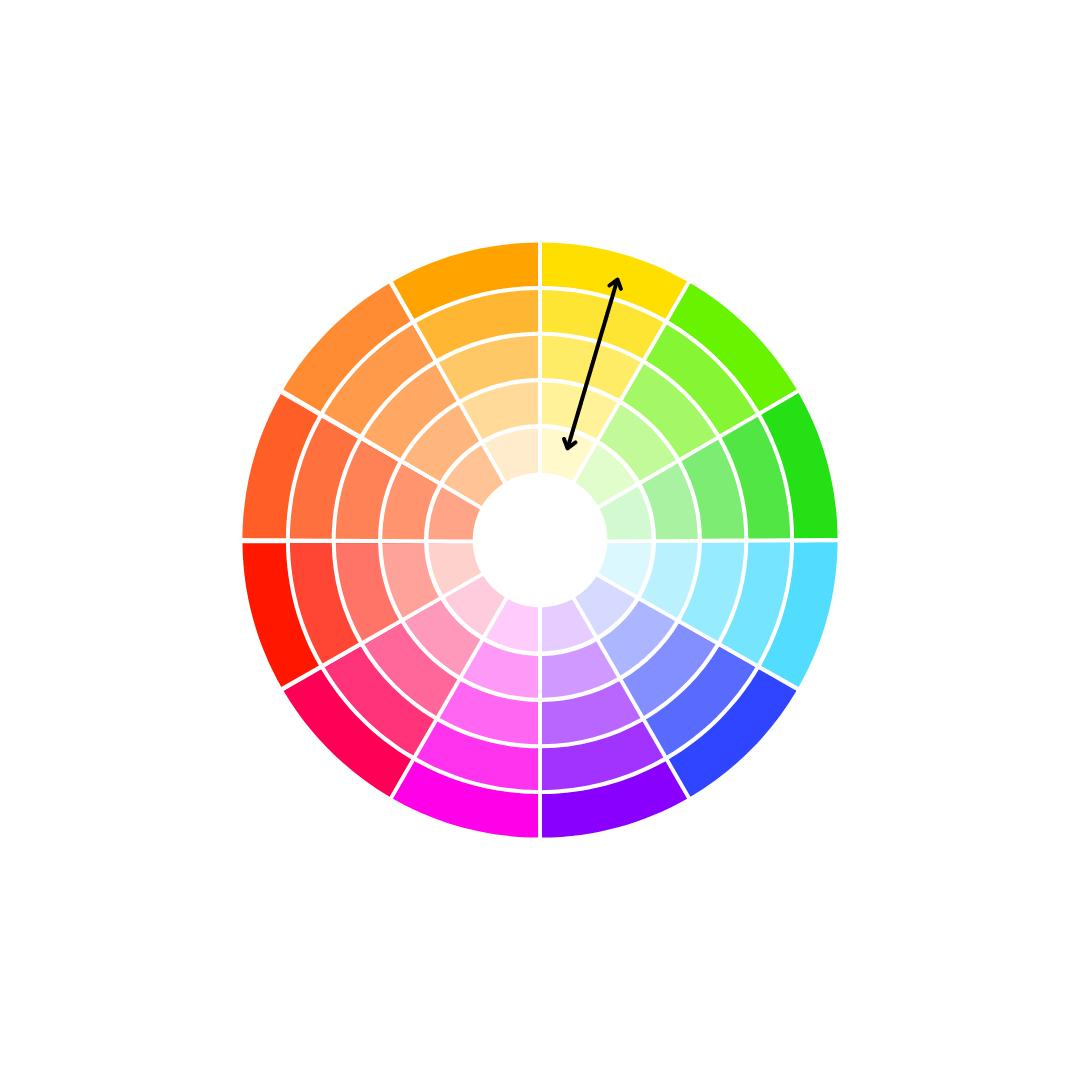
Monochromatic
A single colour in various shades, tints, or tones.
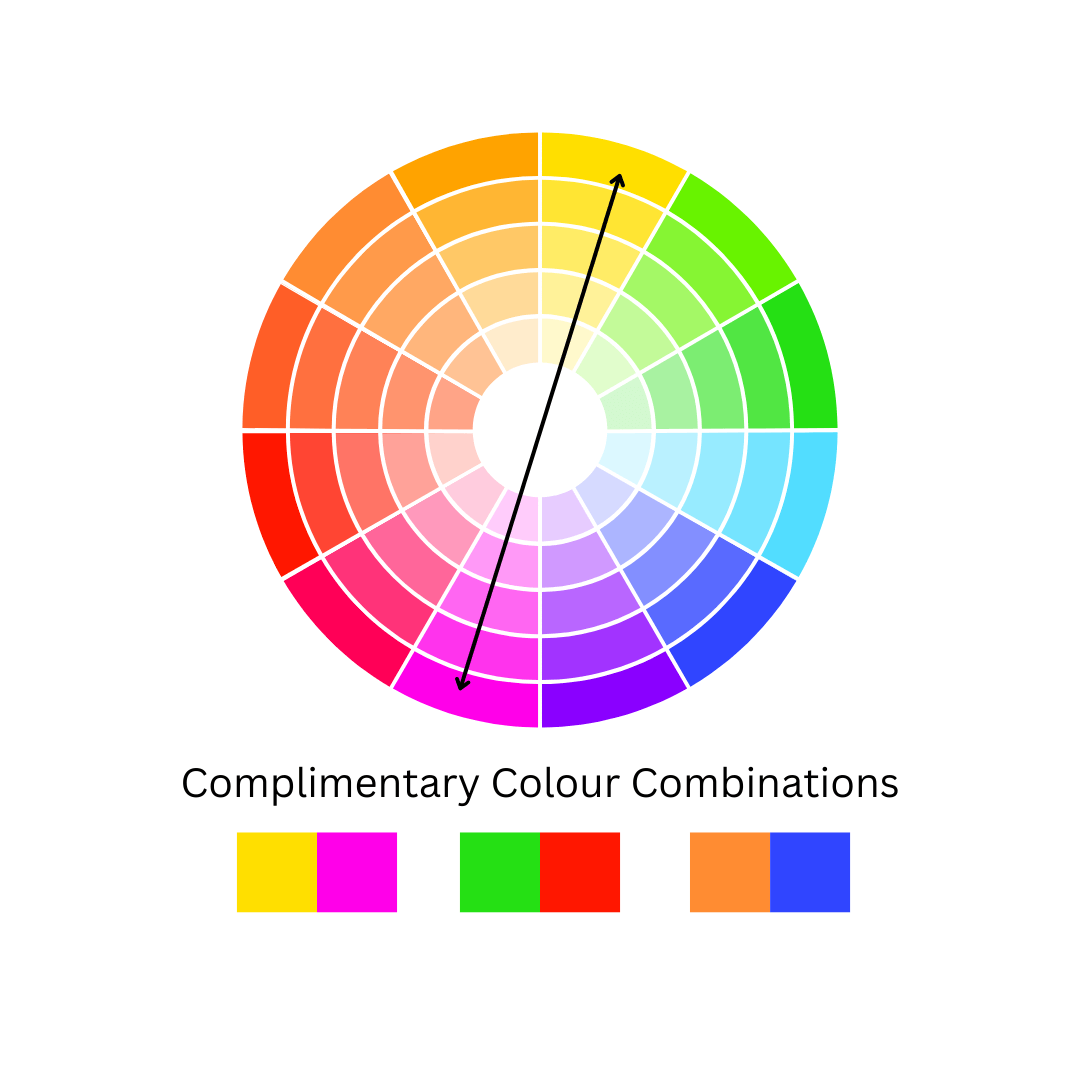
Complementary
Colours that are directly opposite each other on the colour wheel, such as red and green, blue and orange, or yellow and purple.
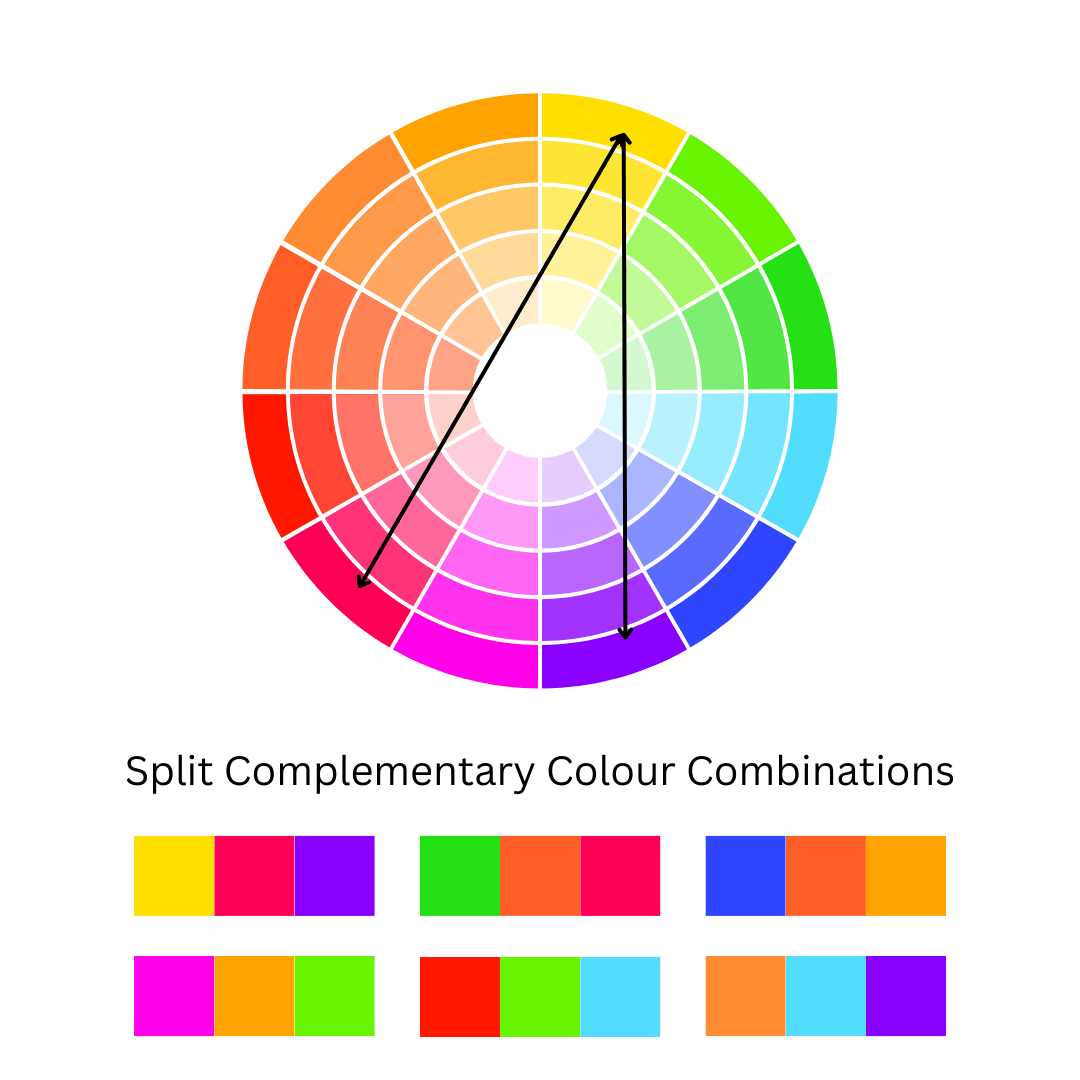
Split Complementary
A key colour paired with two complementary colours on either side of its direct opposite on the colour wheel. For example, with yellow as the key colour, the complementary colours would be red-purple and blue-purple.
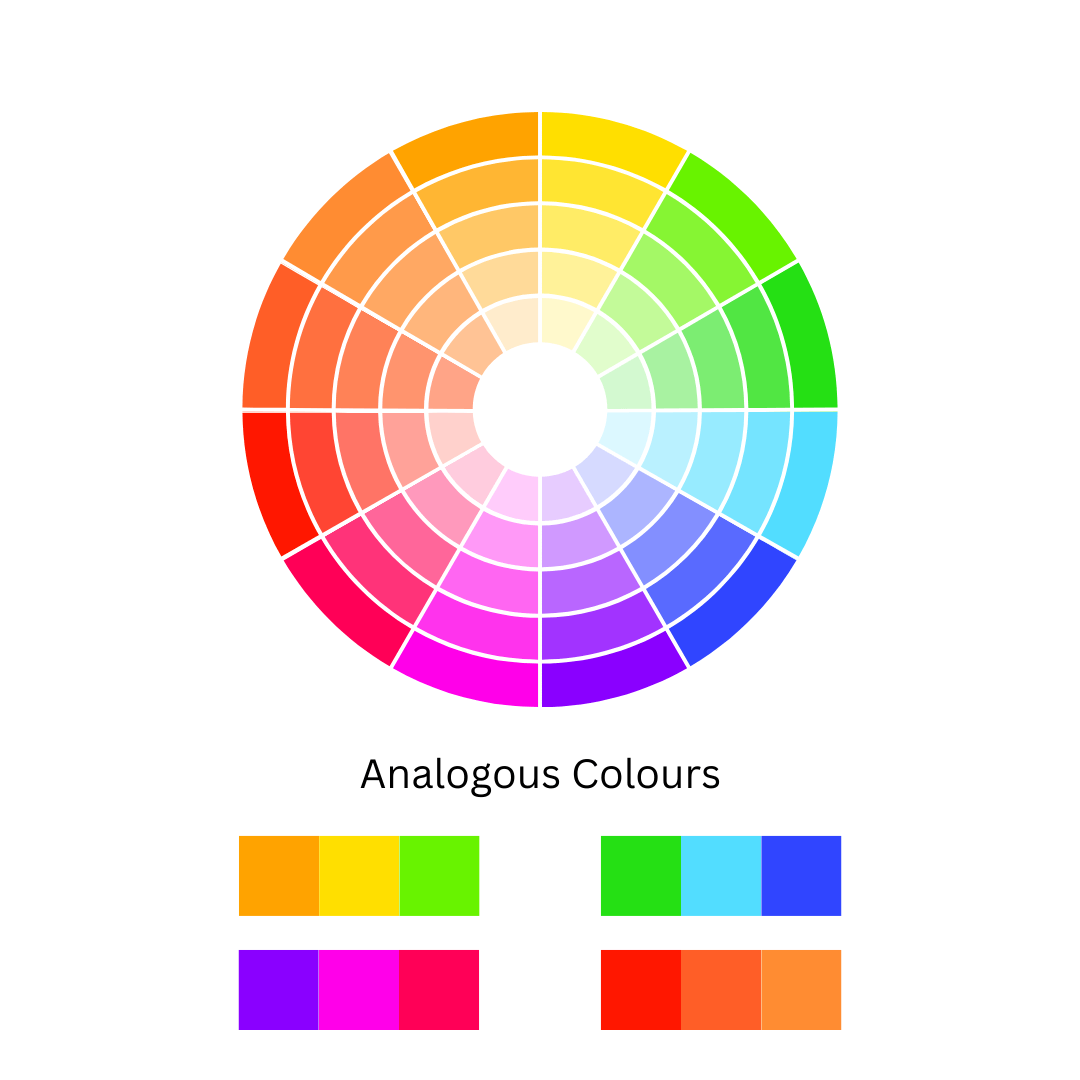
Analogous
A group of three colours that sit next to each other on the colour wheel, such as green-blue, blue, and blue-purple.
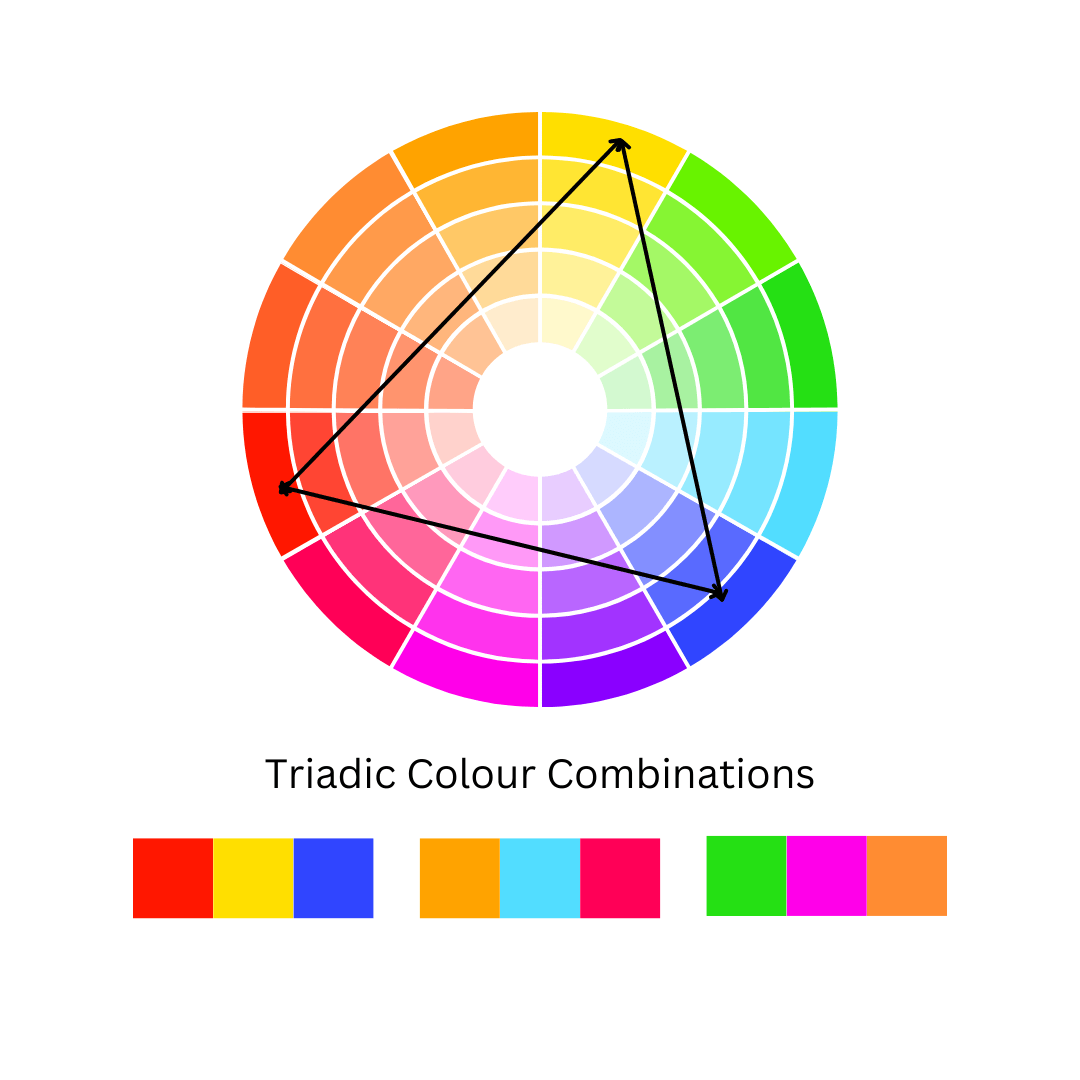
Triadic
A trio of colours evenly spaced around the colour wheel, like red, yellow, and blue.
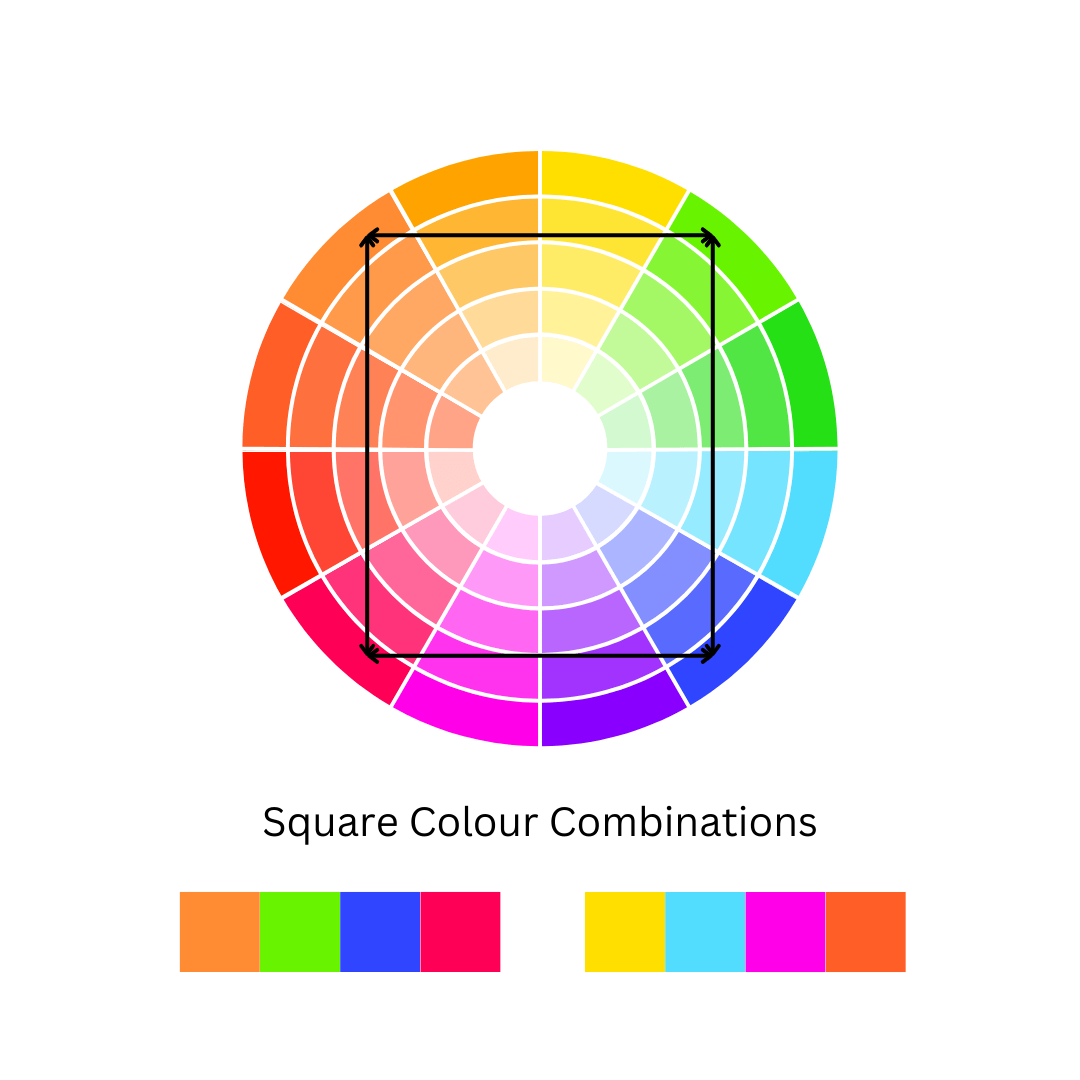
Square
Four colours that are evenly spaced apart on the colour wheel, forming a square when connected.
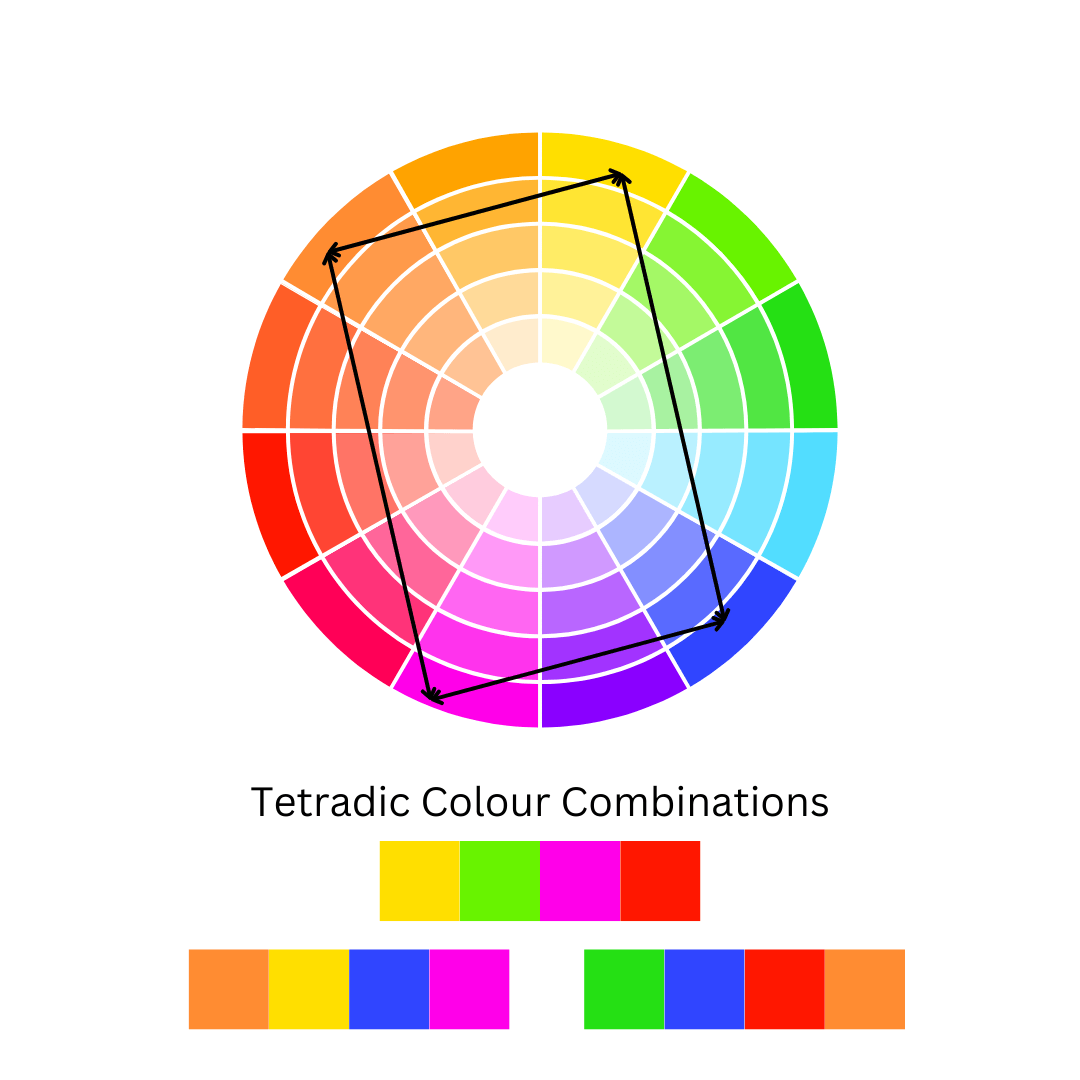
Tetradic
A colour scheme involving four colours that, when connected on the colour wheel, form a rectangle.
As one of the primary colours in both the additive (RGB) and subtractive (RYB) colour models, yellow holds a pivotal place in colour theory. It is often associated with warmth, light, and energy due to its close connection to the sun. In the psychological realm, yellow is linked to feelings of happiness, optimism, and creativity. However, when used excessively, it can evoke caution or even anxiety.
From a design perspective, yellow commands attention and stimulates mental activity, making it a popular choice in marketing and branding. Its versatility extends into art, where it can be tempered with cool tones for contrast or blended with reds and oranges for dynamic warmth.
Now that you have a grasp of the basics of colour theory, let’s dive into the specifics of combining yellow with other colours to create harmony, contrast, and visual impact in various design contexts.

Monochromatic Schemes
When applying a monochromatic colour scheme concept to yellow, the result is a dynamic and versatile palette that can evoke a range of emotions and atmospheres. Lighter tints of yellow create soft, calming pastels reminiscent of spring and freshness. On the other hand, darker shades of yellow result in rich, golden tones that suggest maturity, stability, and luxury.
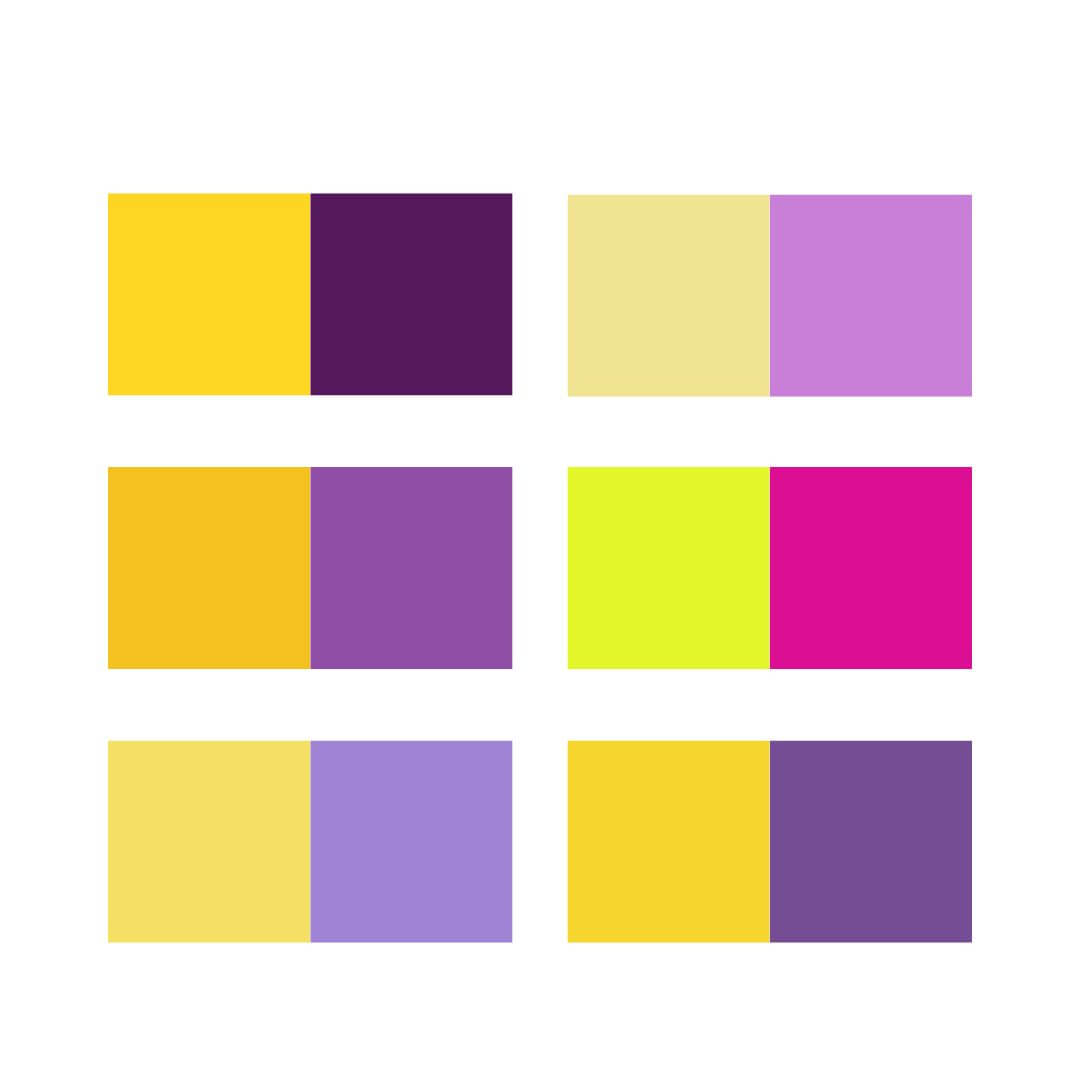
Complementary Colour Schemes
This pairing naturally draws the eye, making it ideal for creating bold, attention-grabbing designs.
A bright, saturated yellow paired with a deep, rich purple produces a dramatic, energetic contrast. Softer shades like lavender and pastel yellow, however, create a more subdued and elegant aesthetic.

Split Complementary Colour Schemes
This trio balances yellow’s brightness with the cooler, deeper tones of blue-violet and the warmth of red-violet. The result is a visually dynamic yet harmonious palette. Designers and artists often use this scheme to maintain contrast without the harshness of a direct complementary pairing.

Analogous Colour Schemes
This combination reflects the natural progression of colours found in nature, evoking feelings of warmth, energy, and freshness.
Using an analogous scheme with yellow allows for smooth transitions between hues while maintaining a unified look. Together, these colours create a cohesive palette that feels balanced yet lively.

Triadic Colour Scheme
This combination creates a vibrant and visually striking effect due to the strong contrast among the three hues while maintaining a sense of balance.
When used together, these colours create a sense of harmony with built-in contrast, making the scheme popular in branding, advertising, and art.

Square Colour Scheme
The square colour scheme provides variety and versatility while maintaining a sense of balance. Yellow serves as a bright, energetic anchor, while the other colours—blue, red, and green—add depth, richness, and diversity.

Tetradic Colour Schemes
For yellow, the tetradic colours scheme creates a rich, diverse palette with a high level of contrast, offering both variety and balance.
Yellow serves as a bright, vibrant focal point, while purple adds depth and sophistication. Blue brings a sense of calm and balance, while orange introduces warmth and energy.
The Emotional Impact of Wearing Yellow
Wearing yellow can have a profound emotional impact, both on the wearer and those around them. As one of the brightest and most energizing colours, yellow is often associated with feelings of happiness, optimism, and confidence. It evokes the warmth of the sun, and many people feel uplifted and more positive when surrounded by yellow. Wearing yellow can create an immediate sense of cheerfulness, making it a popular choice for events or occasions where the goal is to radiate joy and warmth.
However, yellow’s emotional effect isn’t always entirely positive. While it can inspire creativity and mental clarity, it can also be overwhelming if overused. In large doses or in specific shades, yellow may be associated with anxiety or caution, which is why it’s often used sparingly in situations requiring careful attention. The emotional response to wearing yellow can depend on the tone and context—lighter, pastel yellows tend to feel calming and gentle, while bright, saturated yellows can be attention-grabbing and energizing. Ultimately, wearing yellow can make a bold, positive statement, conveying a sense of optimism and vitality, but its impact should be carefully considered to ensure it aligns with the desired emotional tone.
Yellow Colour Schemes on the Streets
-

Monochromatic
-

-

-

Complimentary
-

-

-

Analogous
-

-

-

Triadic
-

-

Bringing Colour Theory to Life
In conclusion, yellow is a colour that carries both power and subtlety within colour theory. From its bright, attention-grabbing presence in the RGB and RYB colour models to its emotional impact, yellow is a versatile hue that can evoke feelings of happiness, optimism, and energy. Whether used in monochromatic schemes for harmony, complementary or split-complementary pairings for contrast, or more dynamic schemes like triadic and tetradic, yellow plays a pivotal role in design. Its psychological effects, from boosting creativity to stirring caution, further enhance its significance in visual storytelling. Understanding how to combine yellow with other colours and harness its emotional influence allows designers and artists to create compelling, meaningful compositions that resonate with their audiences.
So, the next time you’re working on a design, artwork, or even choosing your outfit, consider the power of yellow. How can you use this vibrant colour to evoke the right emotion or message? Explore its potential, experiment with different combinations, and let yellow’s energy brighten your creative process!
All images available from Google.
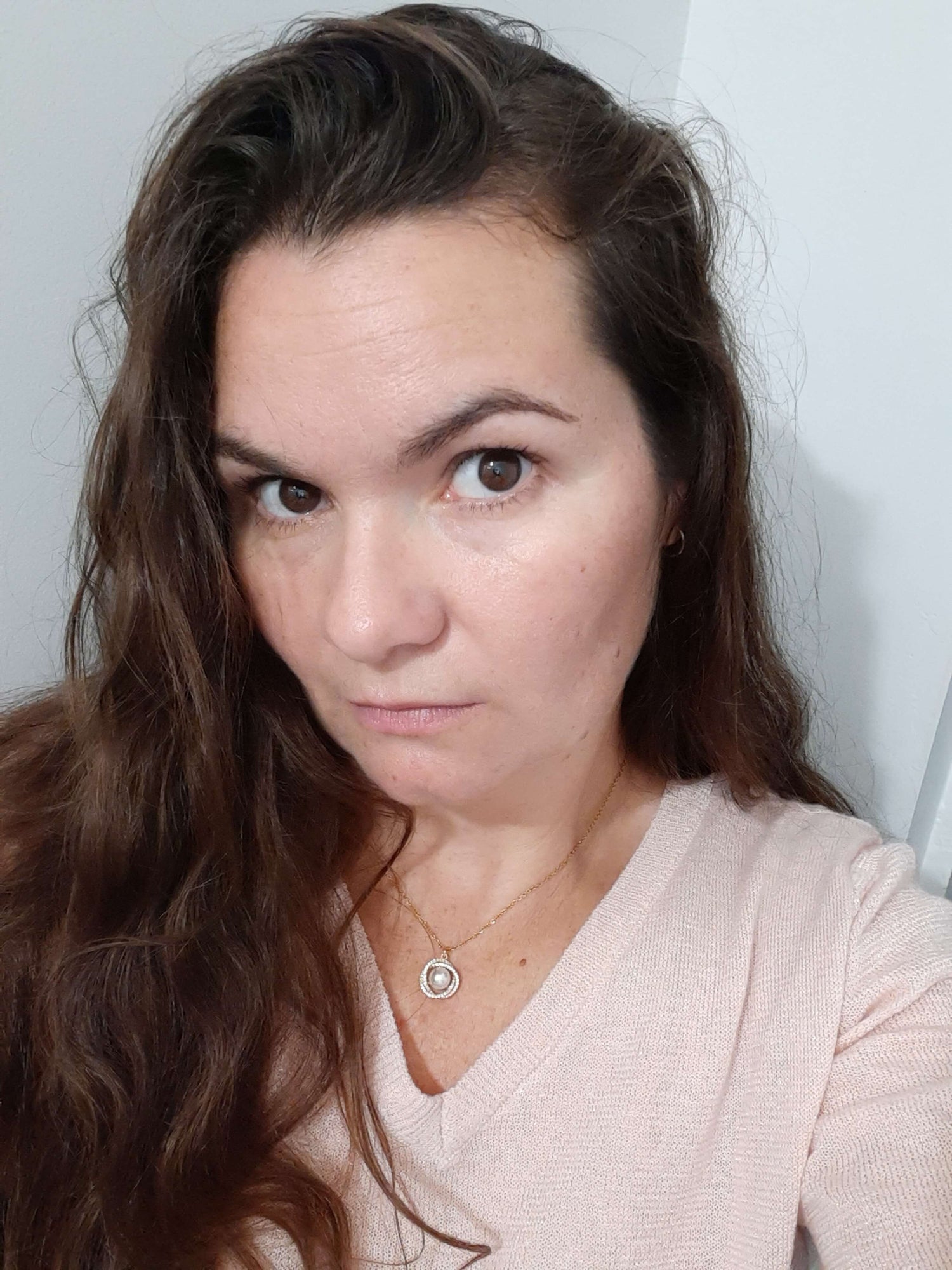
About the Author
Melissa Rath is an Australian milliner creating unique, handcrafted hats. She shares insights on design, styling, colour theory, the history of hats and all things millinery.
Featured collection
-
Yellow Beaded Halo Headband by Melissa Rath Millinery
Regular price $125.00 AUDRegular priceUnit price / per -
Yellow Millinery Saucer Hat by Melissa Rath Millinery
Regular price $250.00 AUDRegular priceUnit price / per -
Yellow Millinery Fascinator by Melissa Rath Millinery
Regular price $220.00 AUDRegular priceUnit price / per -
Yellow Floral Headband with Veil by Melissa Rath Millinery
Regular price $125.00 AUDRegular priceUnit price / per
